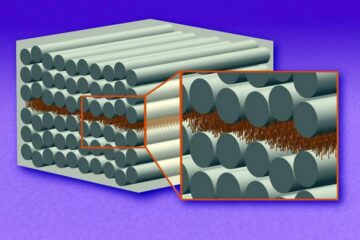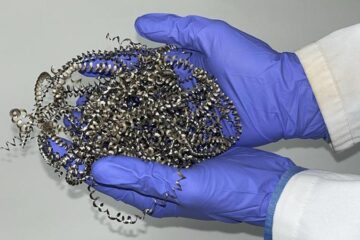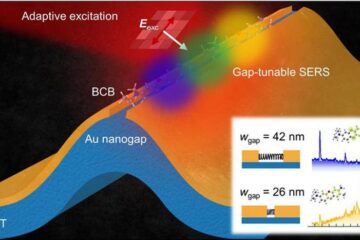Performance test for neural interfaces

Analysis of characteristics of a microelectrode for receipt of electrical nerve cell signals at body temperature, photographed using a scanning electron microscope (left).
Illustration: Maria Asplund
Freiburg researchers develop guidelines to standardize analysis of electrodes
How can scientists measure and define the performance of neural electrodes if there are no uniform standards? Freiburg microsystems engineer Dr. Maria Asplund together with Dr. Christian Böhler and Prof. Dr. Thomas Stieglitz, as well as Prof. Dr. Luciano Fadiga and Dr. Stefano Carli from the Italian Institute of Technology at the University of Ferrara, Italy, have developed guidelines to standardize the testing of the performance of electrodes for neural interfaces and bioelectronic systems. The researchers have published their tutorial in Nature Protocols.
Implantable neural interface extensions increase opportunities for neuroscientists to study the nervous system including the brain, and to develop potential treatments for diseases such as epilepsy and multiple sclerosis as well as for neurological disorders such as paralysis and loss of speech after stroke. This gives the electrodes a key role, as they form the physical interface between the technical system and the biological cells. Nevertheless there is currently no general agreement on how best to assess and compare electrodes in the laboratory, or how to estimate and predict their efficiency when receiving and stimulating electrical signals after implantation.
In their tutorial the researchers present and critically discuss the key performance tests for characterizing neural interface electrodes. They also explain how they interpret the tests and implement them in scientific procedures, and the limits on this.
“Without generally accepted performance tests it’s difficult to evaluate the many proposals for electrode materials in the literature and to determine where we should focus efforts,” Asplund explains. “We’re proposing a uniform standard, in order to enable transparent reporting on electrode performance and promote an efficient scientific process. In the end we want to speed up implementation in clinical practice.”
Original publication
Boehler, C., Carli, S., Fadiga, L., Stieglitz, T., Asplund, M. (2020): Tutorial: guidelines for standardized performance tests for electrodes intended for neural interfaces and bioelectronics. In: Nature Protocols. DOI: 10.1038/ s41596-020-0389-2
Contact:
Dr. Maria Asplund
Department of Microsystems Engineering (IMTEK)
University of Freiburg
Tel.: +49 761 203 67375
maria.asplund@imtek.uni-freiburg.de
Originalpublikation:
Media Contact
All latest news from the category: Medical Engineering
The development of medical equipment, products and technical procedures is characterized by high research and development costs in a variety of fields related to the study of human medicine.
innovations-report provides informative and stimulating reports and articles on topics ranging from imaging processes, cell and tissue techniques, optical techniques, implants, orthopedic aids, clinical and medical office equipment, dialysis systems and x-ray/radiation monitoring devices to endoscopy, ultrasound, surgical techniques, and dental materials.
Newest articles

“Nanostitches” enable lighter and tougher composite materials
In research that may lead to next-generation airplanes and spacecraft, MIT engineers used carbon nanotubes to prevent cracking in multilayered composites. To save on fuel and reduce aircraft emissions, engineers…

Trash to treasure
Researchers turn metal waste into catalyst for hydrogen. Scientists have found a way to transform metal waste into a highly efficient catalyst to make hydrogen from water, a discovery that…

Real-time detection of infectious disease viruses
… by searching for molecular fingerprinting. A research team consisting of Professor Kyoung-Duck Park and Taeyoung Moon and Huitae Joo, PhD candidates, from the Department of Physics at Pohang University…





















